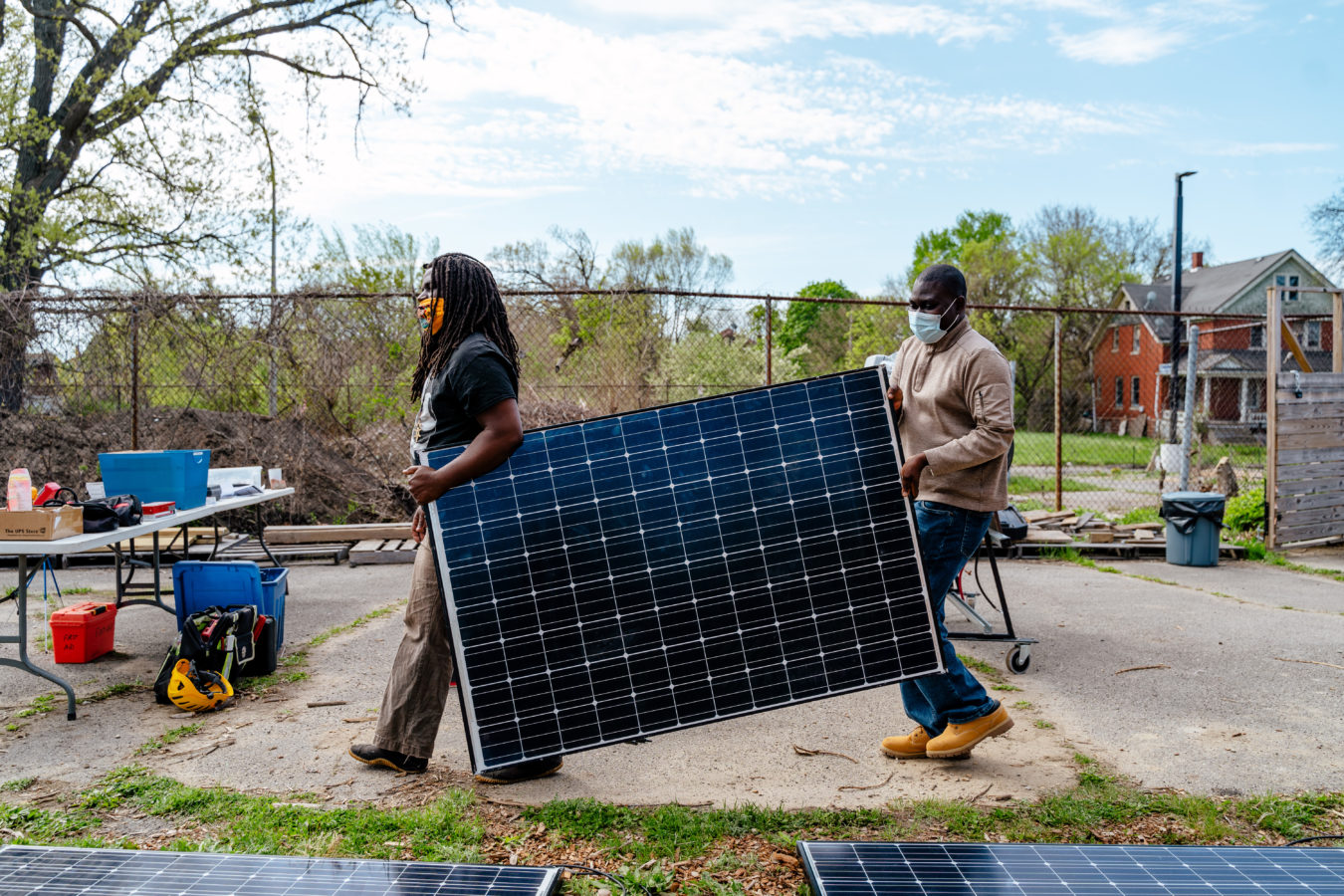Today, the Union of Concerned Scientists (UCS) and Soulardarity are proud to release a new report: Let Communities Choose: Clean Energy Sovereignty in Highland Park, Michigan.
In 2019, Soulardarity—a nonprofit based in Highland Park in Southeast Michigan—released its Blueprint for Energy Democracy, a plan to make Highland Park a global model for sustainability and self-determination. To build on that work, Soulardarity sought to add specificity, data, and modeling to chart a path toward achieving 100 percent local, resilient, and affordable clean electricity resources that are owned by people in the community.
UCS partnered with Soulardarity to explore what this vision could look like. Our first step was to identify the types of resources that could generate the average annual electricity demand of Highland Park’s residential and commercial sectors (for reference, the population of the city is roughly 10,000 people). We identified the following: energy efficiency, various types of solar power applications, and a community water and energy resource center (CWERC).

We then examined each of these resources, including the use of software called HOMER (Hybrid Optimization of Multiple Energy Resources) to model rooftop solar capacity and costs. With rooftop solar in particular, we found that current policies maintained in Michigan and by the electric utility serving Highland Park (DTE Energy) inhibit the full use of rooftops to serve the community with local solar power. However, applying a policy scenario with improved compensation to recognize the value of distributed solar installations and other measures, the situation improved considerably in our modeling. In fact, we found that rooftop solar could contribute 30 percent of Highland Park’s electricity demand with better solar policies in Michigan.
Additionally, our Let Communities Choose report shows that energy efficiency could satisfy 25 percent of the Highland Park’s needs, larger community solar installations could contribute 33 percent, and various forms of other distributed solar—including solar carports, canopies, and trees—another 6 percent. A CWERC, which converts wastewater and food waste to electricity, reusable water, and other useful products, makes up the last 6 percent. We also explain how battery storage can play a role in energy sovereignty and conclude with a series of recommendations that the state legislature, Michigan Public Service Commission (MPSC), electric utilities, and local governments like the City of Highland Park should pursue to facilitate movement toward visions of energy sovereignty.

Let Communities Choose: Clean Energy Sovereignty in Highland Park, Michigan
In addition to its community and energy policy significance, this project was extremely fulfilling to me personally. I grew up in the Metro Detroit suburbs. In the 1980s and 90s, there were still a lot of dirt roads and cornfields where I lived. White people lived in the suburbs and Black people lived in the city. We ventured downtown mostly only for baseball games at the old Tiger Stadium at Michigan & Trumbull—or for the occasional visit to the world-class Detroit Institute of Arts. Cities like Highland Park and Hamtramck were known to me then as places with closed auto factories and not much else.
Today, I now know Highland Park to have amazing community leaders—like the members of our project team Shimekia Nichols, Jackson Koeppel, Gracie Wooten, and Juan Shannon—who have positive, innovative energy and the skills and motivation to take on and solve big problems. For instance, Juan and others have started Parker Village, a neighborhood project in Highland Park to advance community-centered sustainable development visions anchored by clean energy. As a follow-on project to Let Communities Choose, UCS is working with Juan and Parker Village to use the HOMER software to model a solar- and battery-powered microgrid for the neighborhood.

While Let Communities Choose is focused on Highland Park and state policies in Michigan, the vision articulated in the report and the analytical methodology we used is applicable to communities across the country. Recognizing that people should have the ability to choose how their electricity is provided—the right to energy sovereignty—and to choose locally-generated clean energy are the core principles of the better energy system explored in Let Communities Choose.
We at UCS and Soulardarity hope this work will inspire and equip other communities to further pursue their visions and dreams for more reliable, more affordable, and cleaner electricity that builds wealth for their residents and businesses.
Read the full report here: www.ucsusa.org/resources/let-communities-choose-clean-energy

